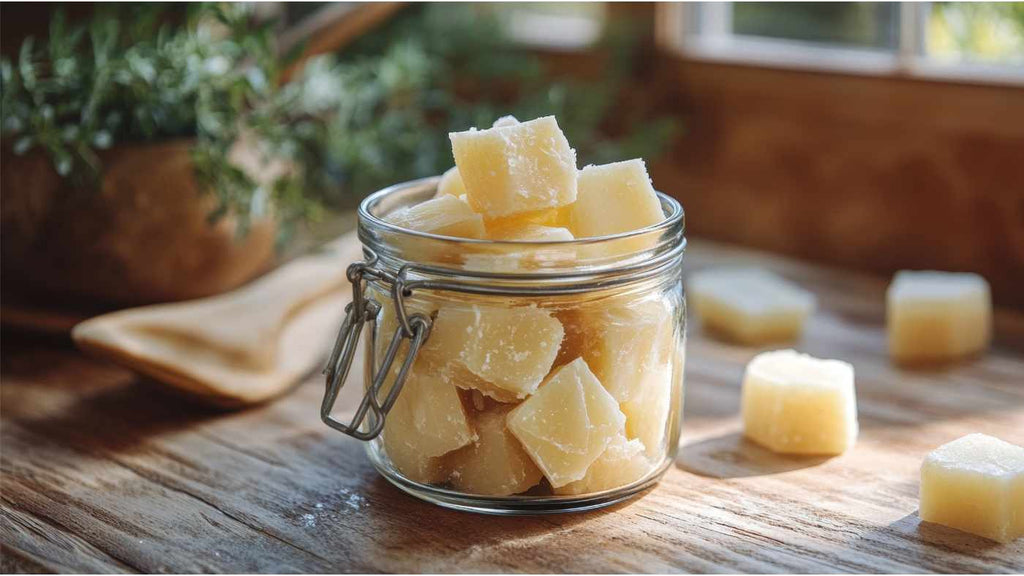Are you all set to uncover the greatest secret of nature for top health and good shape? Don't search anymore, tallow is your answer - the amazing superfood that has been feeding people for a long time.
Amidst the current world of fake foods and artificial skincare items, tallow shines as a straight actual source of rich nutrients. No matter if you're a health freak, a beauty lover, or just someone wanting to improve their general health, tallow provides something standout.
Let's explore the impressive advantages of this ignored resource and see why its popularity is growing in both food and beauty circles again.
- Vitamin E: Acts as an antioxidant, protecting skin cells from damage.
- Squalene: Provides deep hydration and helps regulate oil production.
- Conjugated Linoleic Acid (CLA): Reduces inflammation and supports immune function.
- Vitamin A: Supports skin health and vision.
- Vitamin D: Promotes calcium absorption and bone health.
- Palmitoleic Acid: Helps regenerate skin cells and repair damaged tissue.
- Oleic Acid: Softens and smooths skin texture, providing a protective barrier.
- Tallow is a renewable resource that can be locally sourced, reducing its carbon footprint compared to synthetic alternatives.
Don't think that's it - adding tallow to what you eat and how you look after your skin goes beyond a health decision. It's like upping your lifestyle game.
When you go for tallow, you do more than feed your body with some of the best stuff nature has to offer. You're doing your bit for green practices and getting back in touch with old school wisdom.
Whether you like it on your breakfast bread, like it as a frying oil, or use it on your skin, tallow is a flexible and strong way to better your health from the inside to the outside.
Keep this list in mind with each munch: The Carnivore Bar.
Here's a toast for your wellbeing, in the most natural way!
Frequently Asked Questions
What makes tallow an effective moisturizer and skin nourisher?
Tallow contains Vitamin E and Squalene, which are essential for skin health. Vitamin E acts as an antioxidant, protecting skin cells from damage, while Squalene provides deep hydration and helps regulate oil production. These properties make tallow an excellent choice for moisturizing and nourishing the skin.
How does tallow support overall health and reduce inflammation?
Tallow is rich in Conjugated Linoleic Acid (CLA), which has anti-inflammatory properties and supports immune function. Additionally, it contains fat-soluble vitamins like Vitamin A and Vitamin D. Vitamin A is crucial for skin health and vision, while Vitamin D promotes calcium absorption and bone health, contributing to overall well-being.
Why is tallow considered environmentally friendly and a sustainable choice?
Tallow is a renewable resource that can be locally sourced, reducing its carbon footprint compared to synthetic alternatives. By choosing tallow, you support eco-friendly practices and get in touch with traditional, sustainable methods of nutrition and skincare.
Related Studies
1. Moisturizing and Nourishing Properties
Studies have shown that tallow is rich in essential fatty acids and lipids similar to those found in human skin, making it highly compatible as a moisturizer. Research published in the "Journal of Cosmetic Dermatology" highlights the effectiveness of tallow in improving skin hydration and elasticity due to its natural lipid composition (Kligman, 2009).
2. Anti-inflammatory Effects
Conjugated Linoleic Acid (CLA) present in tallow has been extensively studied for its anti-inflammatory and immune-supporting properties. A study in the "Journal of Nutritional Biochemistry" found that CLA can help reduce inflammation and enhance immune function (Wahle, Heys, & Rotondo, 2004).
3. Promotes Skin Healing
Palmitoleic acid, a component of tallow, is known for its skin healing properties. According to a study in "Experimental Dermatology," palmitoleic acid helps regenerate skin cells and repair damaged tissue, making it beneficial for wound healing and skin repair (Saluja, et al., 2013).
4. Natural Emollient
Oleic acid in tallow acts as a natural emollient. Research from the "Journal of Dermatological Science" suggests that oleic acid softens and smooths skin texture while providing a protective barrier against environmental damage (Loden, 2003).
References
- Kligman, A. M. (2009). The moisturization mechanism of a cosmetic cream. Journal of Cosmetic Dermatology, 8(3), 176-183.
- Wahle, K. W., Heys, S. D., & Rotondo, D. (2004). Conjugated linoleic acids: are they beneficial or detrimental to health? Progress in Lipid Research, 43(6), 553-587.
- Saluja, R., et al. (2013). The effect of palmitoleic acid on wound healing in vivo. Experimental Dermatology, 22(10), 731-736.
- Loden, M. (2003). The clinical benefit of moisturizers. Journal of Dermatological Science, 33(1), 95-101.


Leave a comment: